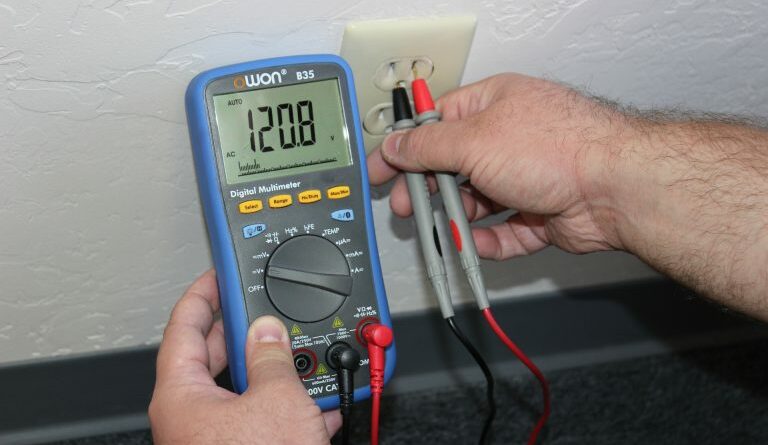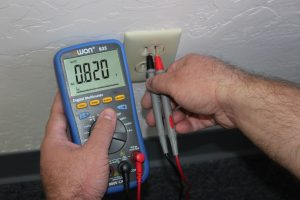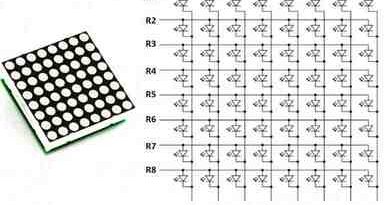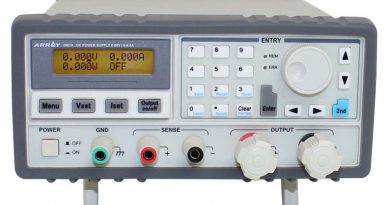Testing an Electrical Outlet Using a Digital Multimeter
These diagnostic steps are used to help locate electrical problems in a number of different sources. A digital multimeter gives automatic, quick readings that display VAC (volts alternating currents), VDC (volts direct current), and ohms. Testing an electrical outlet using a digital multimeter in your home, you will need to use the VAC reading available on the device because you are looking for a measurement of Alternating Current Voltage. If you want to know more about AC and DC power, this article is a must-read, The War of the Currents: AC vs. DC Power, from the Department of Energy.
Here’s how to check your electrical outlet using a digital multimeter:
- First, grab your digital multimeter. (Need a new one? Check out our multimeter page.)
2. Then, set the dial to AC Voltage or VAC. Note: the maximum voltage for each set, household current is approximately 120 volts, set the dial accordingly.
3. After that, connect the probes to the proper inputs: COM for the black lead and Volts for the red lead.
4. Next, insert the red probe into the right slot of the outlet.
5. Then, carefully insert the black probe into the left slot of the outlet.
6. Finally, examine the readout on your meter, this should show your household voltage.
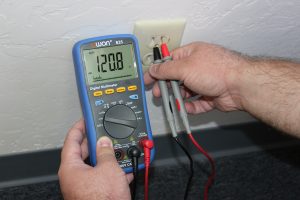
Explain the logic behind Testing an Electrical Outlet Using a Digital Multimeter:
The first step when testing an electrical outlet is to locate the multimeter’s connector labeled “volts” and insert the red lead into it.
Next, you will need to connect the black lead, this is done by connecting it to the “com” label. Note – The red lead may have a red ring around the connector and the black lead may have a black ring. As mentioned above, you will be using the “VAC” or volts option on the multimeter. So make sure the digital multimeter is in this setting. Each multimeter is different which means yours may read 0.0 VAC, VAC, or only 0.0. Once this is set, you are ready to begin testing.
Now it’s time to insert the red lead into the vertical slot of the wall outlet, make sure to insert it into the slot located on the right.
The black lead will be inserted into the left vertical slot of the wall outlet. Now it will be time to check to see what reading you are receiving. Typically, you should receive a reading between 110 and 120 VAC. This all depends on the power levels the utility companies are supplying. If your multimeter continues to show 0.0 you may have a bad connection, try wiggling the leads for better contact. If this does not help you may have an electrical problem with your outlet.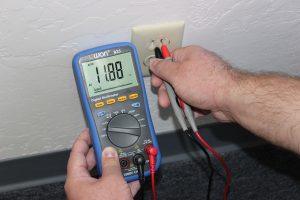
Then, it’s time to remove the black lead from the slot and insert it into the oval slot. This section of the electrical outlet is the ground and you will soon see a voltage reading. If no reading is displayed you may have a blown fuse or the circuit breaker may be tripped.
A digital multimeter is an extremely useful tool to have around the house, here are some tutorials covering other things you can do with one:
Here we explain how to locate a buried cable fault with a digital multimeter.
This tutorial explains how to test LED’s with a digital multimeter.
And, for a deeper dive, try this tutorial on measuring resistance with a DMM.
